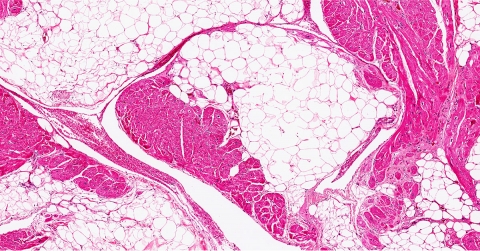Myocardial Fibrosis: Symptoms, Diagnosis, and Treatment

Myocardial fibrosis is a condition that involves the buildup of scar tissue in the myocardium, which is the heart muscle. Anything that causes damage to the heart can lead to scar tissue. Heart attacks are the most common cause of myocardial fibrosis.
Both sudden heart injury and chronic heart injury due to disease can cause scar tissue to form. When tissue is damaged, the body replaces dead cells with scar tissue to heal quickly and efficiently. This process happens in the heart just like in other parts of the body.
While scar tissue helps the body repair itself quickly, the tissue is not the same as the missing or damaged tissue. Scarred myocardial tissue is less flexible and less able to properly contract. Over time, this contributes to less efficient pumping and can lead to heart failure. When your heart cannot pump enough blood to meet the body’s needs, heart failure occurs.
Other causes of myocardial fibrosis include conditions that create excess volume or blood pressure, including hypertension, aortic stenosis, pulmonary artery stenosis, or faulty valves that allow blood to flow backward. In these cases, scar tissue helps protect the heart from the excess pressure. Inflammation from viruses, toxicity from cancer medications, diabetes, and genetic conditions can also contribute to scarring. Finally, heart failure can both cause myocardial fibrosis or happen due to myocardial fibrosis.
Symptoms of myocardial fibrosis
Potential symptoms of this condition include:
- Fatigue
- Shortness of breath
- Irregular or rapid heartbeat
- Trouble breathing, particularly when lying down
- Edema (swelling) in lower extremities
- Persistent cough
- Gasping for air upon waking
- Nausea
Diagnosis and treatment
As with many heart conditions, the first tool used for diagnosing myocardial fibrosis is an echocardiogram. This test allows doctors to get a picture of how blood flows through the heart. If initial testing identifies a weakness or causing the doctor to suspect fibrosis, the next step is typically cardiovascular magnetic resonance, or CMR.
The CMR is a type of MRI. It uses magnets and radio waves to create an image of the heart and the surrounding blood vessels, which helps doctors determine where fibrosis has developed.
Generally, treatment for myocardial fibrosis centers around addressing the underlying disease. Heart attacks are treated by stent placement and bypass surgery. Other heart conditions contributing to myocardial fibrosis may be treated with an ablation procedure, valve replacement, valve surgery, or heart transplant.
While medication is not used to treat fibrosis directly, many causes of fibrosis are treated with medications. ACE inhibitors and beta blockers are used to treat reduced heart function and low ejection fraction. The aim of these medications is to make the heart function more efficiently.
If you have been diagnosed with myocardial fibrosis or wonder if your heart disease has caused scarring, reach out to specialists at OHH to schedule an appointment.




